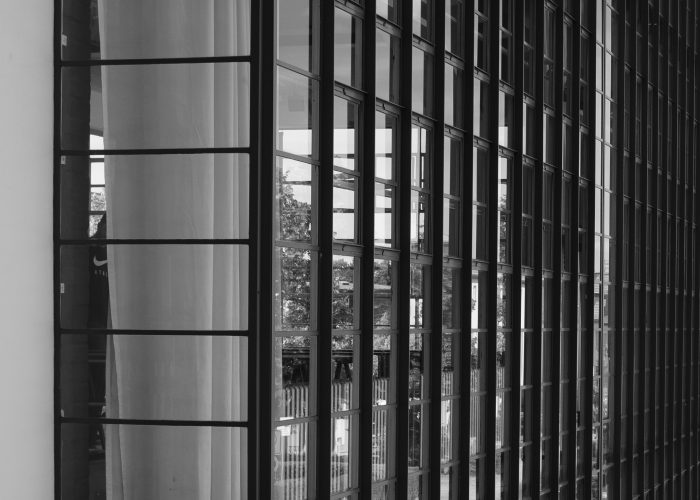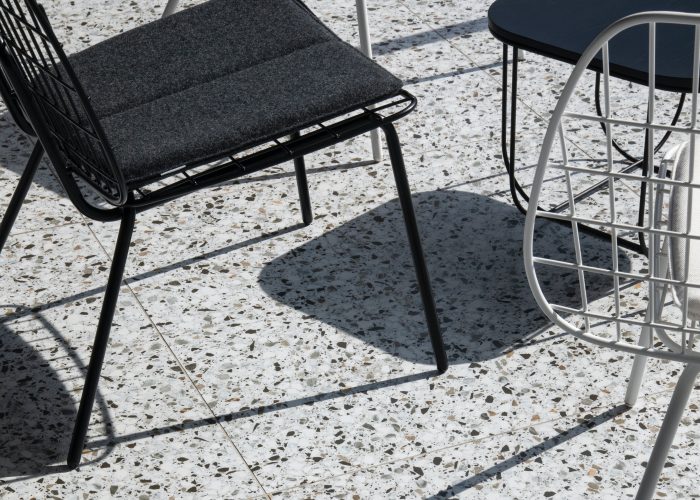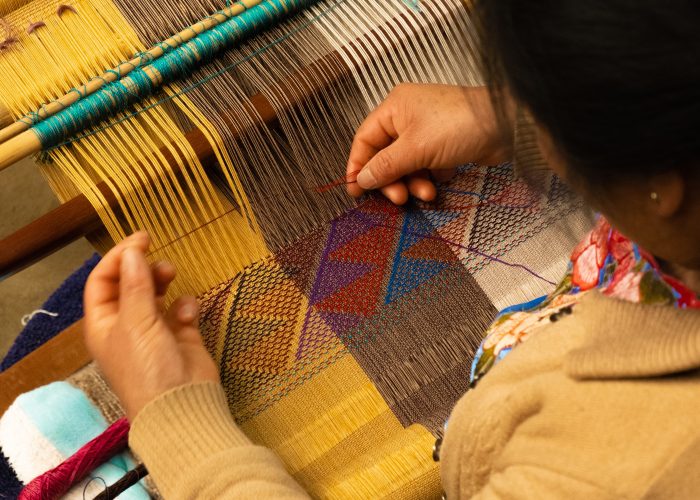The Bauhaus Effect
Many of us know Bauhaus as one of the most influential movements of the 20th century, dominating many mediums of European art throughout the 1920’s to 1930’s. Following the rebrand Commercial Interiors UK, which was creatively influenced by the style of Bauhaus, we look at how the movement began, the effect it’s had on everyday products and architecture and examples that showcase key elements of the style.

Founded by Walter Gropius, The Bauhaus school was established in Weimar in 1919, and was renowned for its unique aesthetic that combined fine arts with arts and crafts. The movement marked a move away from avant-garde art, breaking down of class boundaries and making art more accessible to everyone, during a time in which there was immense tension between classes and communities in Germany. For this very reason, the school was forced to move to Dessau and later to Berlin, where The Baushaus closed its doors for a final time due to political pressure from the Nazi’s in 1933. According to Gropius’ manifesto, “art should serve a social role and there should no longer be a division of craft-based disciplines”, which the Bauhaus movement encompassed as their driving force and still advocates for today.
Bauhaus filtered into many art mediums but had similar elements. Bauhaus interiors were minimalist and clean, with highly intentional furniture placement which were often a statement to each room. Clean lines, rounded corners, tubular-steel furniture and glass clad exteriors all dominated Bauhaus designs, all of which a stark opposition to the opulent styles of Art Deco and Nouveau from previous decades.

Harping back to the combination of fine arts with arts and crafts, Gropius’ first project, the Fagus Factory, was a space for craftsmen of The Bauhaus and rooted the architectural style of the movement. Revolutionary walls of glass across the exterior later led to the dematerialization of the load-bearing brick wall and served to amplify natural daylight into its interior, revealing the constructive logic of the building, whilst improving working conditions for those working within the shoe last factory. An example of industrial modernity, this factory was one of the first that exhibited a move away from the “empty schematic forms and historical frippery” of previous decades of industrial construction, as Gropius describes in a lecture entitled “Monumental Art and Industrial Construction”.
This move toward exposing the structure of design in construction, also saw its influence on various everyday products, most namely to the iconic Wassily Chair by Marcel Breurer, named after the Russian painter, Wassily Kandinsky. Otherwise known as the Model B3, the bicycle inspired chair boasted a steel tubular frame with exaggerated curves and leather slings to create a chair that both stood out in design, yet offered functionality with its ergonomic comfort. A piece of furniture that you wouldn’t miss upon entering a room and a style that has influenced many chair designs we see today.

Similar to the bold form in both construction and product, Bauhaus is also characterised by blocks of primary colours and abstract sculptures, a move towards modernism and described by the Tate as “bringing art back into contact with everyday life”. Encapsulating the colour and textile of the movement, Gunta Stölzl was one of the many women from The Bauhaus who although limited to the misogynistically ‘feminine’ disciplines such as weaving, were fundamental to the style and character of Bauhaus as we know it. Experimenting with new materials and revolutionary production methods, Gunta’s textile pieces were colourful and complex in design, whilst hardwearing and functional. Her designs explore a relationship between colours and shapes that come together in a chaotic yet aesthetic harmony. Gunta’s designs continue to inspire and influence textile patterns and designs today, shaping experiences through material, rhythm, proportion, colour and form.

Delving deeper into the form and colour of Bauhaus is Russian painter, Wassily Kandinsky, who opposed the formalist vision of art and saw art as a medium for conveying effects and emotions, which became fundamental to the work that followed. Kandinsky’s art was characterised by the colours and shapes that are still a hallmark of Bauhaus today. Particular colours and shapes were assigned different properties and feelings, hence the consistent use of the primary colours yellow, blue and red, with shapes of triangles, circles and squares, also clearly seen in the rebrand of Commercial Interiors UK. One of his most famous paintings exhibit Kandinky’s use of colours and shapes based on his emotions towards them, Composition VIII.

Through looking back at the history of Bauhaus and the many influential artists and designers who developed new ways of working, thinking and creating, it is no wonder that the inspiration and progression of Bauhaus is relevant today.
With designs and elements that are still being recycled, blueprinted and explored, the Bauhaus movement goes much deeper than just a design aesthetic. The premise on which the movement began was to not just to push boundaries, but create new ones, beginning its own revolution and bringing together societal classes by demolishing divisions between them through various mediums of art.
As an industry body for commercial interiors, it is vital to support the growth of the industry, providing a voice and hub to its members and beyond. As Bauhaus has influenced so many modern designers, architects, manufacturers and artists, Commercial Interiors UK strives provide a body in which we can do the same.





